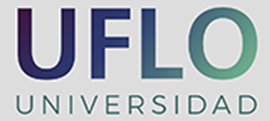CONSUMO DE OXÍGENO (VO2) DIRECTO EN JUGADORES DEL FÚTBOL PROFESIONAL ARGENTINO
Abstract
Como forma de determinar y describir las respuestas del Consumo de Oxígeno (VO2) Directo en 12 (doce) futbolistas durante la aplicación de procedimientos indirectos en campo y laboratorio, 6 (seis) jugadores profesionales fueron evaluados a través de un analizador telemétrico durante la ejecución del Yo-Yo Endurance Test Nivel 1 (ENDtest) (Bangsbo, 1996) en Campo de Juego, mientras que para los 6 (seis) sujetos restantes, fue utilizado un analizador fijo en laboratorio durante la ejecución del Yo-Yo Intermittent Recovery Test Nivel 1 (RECtest) (Bangsbo, 1996) en cinta rodante. Mientras que el VO2 Máximo (VO2máx) Indirecto fue 52,1 ml.min-1.kg-1 (DS = 2,5 ml.min-1.kg-1; CV = 4,7%), el VO2máx Directo Telemétrico (VO2máxT) obtenido durante el último minuto de ejecución del ENDtest fue 63,6 ml.min-1.kg-1 (DS = 6,1ml.min-1.kg-1; CV = 9,5%). El Coeficiente Rs entre los valores Indirectos y Directos fue 0,83, mientras que el Coeficiente Rs2 fue 0,69. De acuerdo a estos valores, se observa una importante tendencia de subestimación del VO2máx Máximo Indirecto respecto al VO2máxT (p<0,05). La manifestación de VO2 Directo en Analizador Fijo (VO2F) obtenido durante la velocidad arbitraria final de 17,5 km/h (Nivel de Velocidad: 20, Intervalos: 8, Distancia: 2680 m) del RECtest para el segundo grupo de futbolistas, fue en promedio de 39,5 ml.min-1.kg-1 (DS = 2,7 ml.min-1.kg-1; CV = 6,9%), con valores promedio máximos de 58,6 ml.min-1.kg-1 (DS = 4,3 ml.min-1.kg-1; CV = 7,4%) y mínimos de 20,4 ml.min-1.kg-1 (DS = 1,1 ml.min-1.kg-1; CV = 5,5%). A pesar que durante la ejecución de RECtest en cinta rodante, los jugadores no se someten a la exigencia de aceleraciones y desaceleraciones para los cambios de dirección propios del test, la manifestación del VO2 ofrece las características propias del Ejercicio Intermitente de Alta Intensidad en Fútbol, confirmando elevados requerimientos durante las fases de Trabajo respecto a las de Recuperación (p<0,05).Published
How to Cite
Issue
Section
The authors who publish in this journal accept the following conditions:
1. The authors retain the copyright and assign to the journal the right to first publication, with the work registered under the Creative Commons Attribution license, which allows third parties to use what has been published as long as they mention the authorship of the work and the first publication in this journal.
2. Authors may make other independent and additional contractual agreements for non-exclusive distribution of the version of the article published in this journal (e.g., inclusion in an institutional repository or publication in a book) provided that they clearly indicate that the work was first published in this journal.
3. Authors are permitted and encouraged to publish their work on the Internet (e.g., on institutional or personal pages) before and during the review and publication process, as this may lead to productive exchanges and greater and faster dissemination of published work (see The Effect of Open Access).









